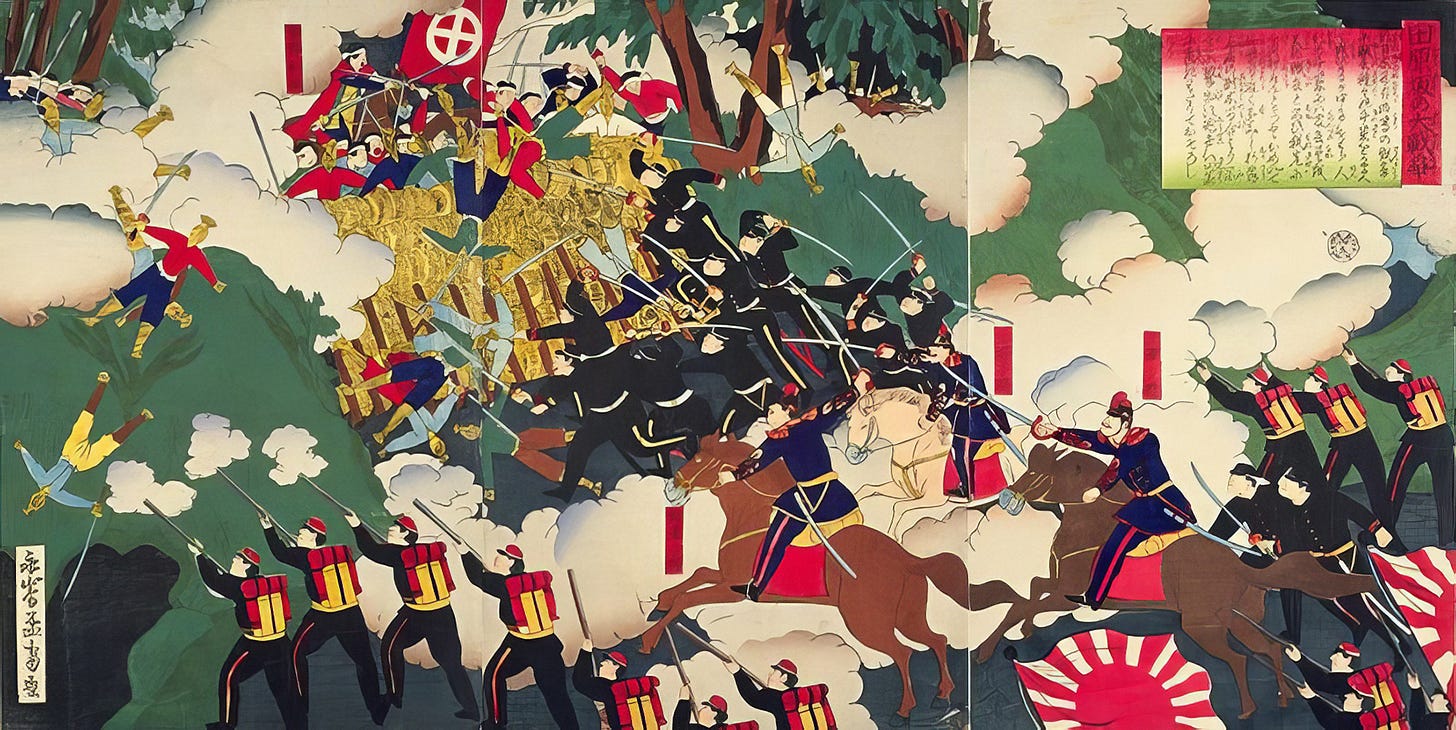The Fall of Restoration Shinto and the Struggle for Modern Japan
Political and Religious Divides in the Meiji Era and the Decline of Restoration Shinto
In the previous article, we looked at how the “Restoration Shinto” (Fukko Shinto) movement of the late Edo period played a key role in understanding the process by which Shinto became a formal religion in the early modern era. This time, we will examine how Restoration Shinto declined once the new government was established.
During the formation of the new government, the most pivotal figure was the statesman Iwakura Tomomi (1825–1883). He was directly influenced by Tamamatsu Misao (1810–1872), who had himself been inspired by the Restoration Shinto ideas passed down through 18th- and 19th-century Kokugaku (National Learning) scholars.
However, once the new government truly began to take shape, it became clear that Tamamatsu’s school of Restoration Shinto faced too many enemies. Fearing it would be dangerous to place the practical administration of modern Shinto policy in their hands, the government chose to distance itself from that group. The flashpoint here was the attempt to wipe out Buddhism from Japan, known as Haibutsu Kishaku (“abolish Buddhism and destroy its teachings”).
Yet if we consider the dynamics of Buddhism during the Edo period, it was a risky move for the new government—eager to build a stable regime—to embark on Haibutsu Kishaku. Indeed, only ten days after its implementation began, the Grand Council of State (Daijōkan) swiftly declared anti-Buddhist actions to be a crime. For certain Shinto priests during the Edo period, driving out Buddhism had been a long-held wish, aiming to establish Shinto as the cornerstone of modern Japan. But that plan quickly fell apart. Standing in the way was the most powerful Buddhist sect, Jōdo Shinshū.
To understand this, we need to look at the two main domains behind the Meiji Restoration: Chōshū (in what is now Yamaguchi Prefecture) and Satsuma (in what is now Kagoshima Prefecture).
Chōshū was heavily influenced by Jōdo Shinshū. During the Meiji Restoration, Nishi Hongan-ji in Kyoto—the head temple of the Hongan-ji branch of Jōdo Shinshū—provided monetary aid and even weapons to Chōshū’s radical faction. As a result, it was impossible for officials from Chōshū, now serving in the new government, to simply expel Jōdo Shinshū from the modern nation; it required delicate handling.
On the other hand, Satsuma was strongly influenced by Kokugaku (devoted to Shinto) and Mitogaku (the “Mito School”), so many radicals in Satsuma opposed Buddhism. Mitogaku, an ideology developed in the Mito domain (in present-day Ibaraki Prefecture), was centered on service to the emperor and, broadly speaking, combined aspects of Kokugaku and Confucian thought.
Because these two domains were grounded in different faith traditions, they could not fully unite on how to build the new government or its future direction. In essence, from the very start, Japan’s vision for how to create a modern nation was divided.
Although Chōshū and Satsuma were famously at odds at the end of the Edo period, they managed to come together to overthrow the Tokugawa shogunate. The individual who facilitated the alliance between these rival forces was Sakamoto Ryōma (1836-1867) of the Tosa domain. Behind Sakamoto stood Britain, seeking new market opportunities, supported by Scottish weapons dealers.
However, Sakamoto Ryōma was assassinated in December 1867, just before the Meiji Restoration. With the death of the prime mediator who had united the two domains, forming a stable new government grew even more complicated.
Thus, the Meiji Restoration began without a strong, neutral figure to bridge differences; and the responsibility for creating such balance fell heavily on Iwakura Tomomi. Initially, Iwakura had launched the new government with Tamamatsu as his chief advisor, and favored Shinto. But before long, the Chōshū faction rose to prominence within the government.
This led to conflict between Chōshū officials, influenced by Jōdo Shinshū, and Satsuma officials, shaped by Shinto. Their discord persisted. Finally, in January 1877, under Saigō Takamori (1828–1877), Satsuma rose up in civil war to topple the Meiji government (in practice, a Chōshū puppet regime).
The result was Satsuma’s defeat. Saigō Takamori took his own life, and those who had stood in the government’s way were thus swept aside, allowing Japan to embark fully on its modern era.
Nevertheless, Saigō Takamori—revered for his towering moral character and still venerated by many to this day—continued to loom large in the designs of the Shinto faction. Over time, his spirit would significantly influence the establishment of State Shinto.



